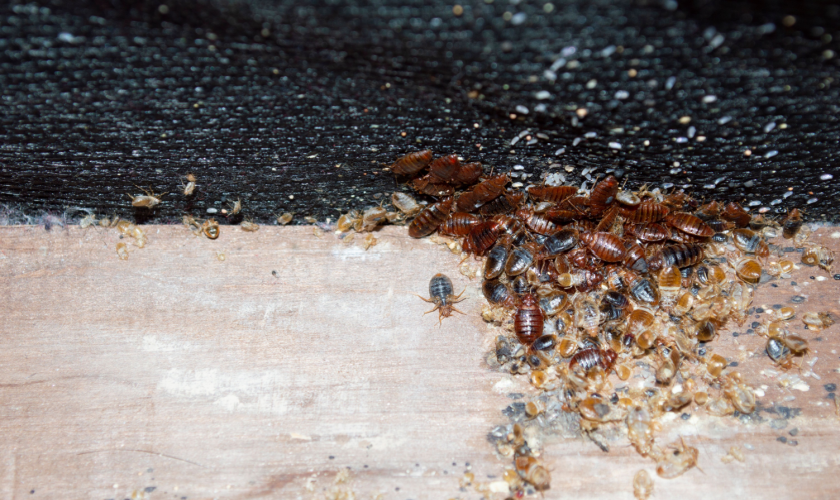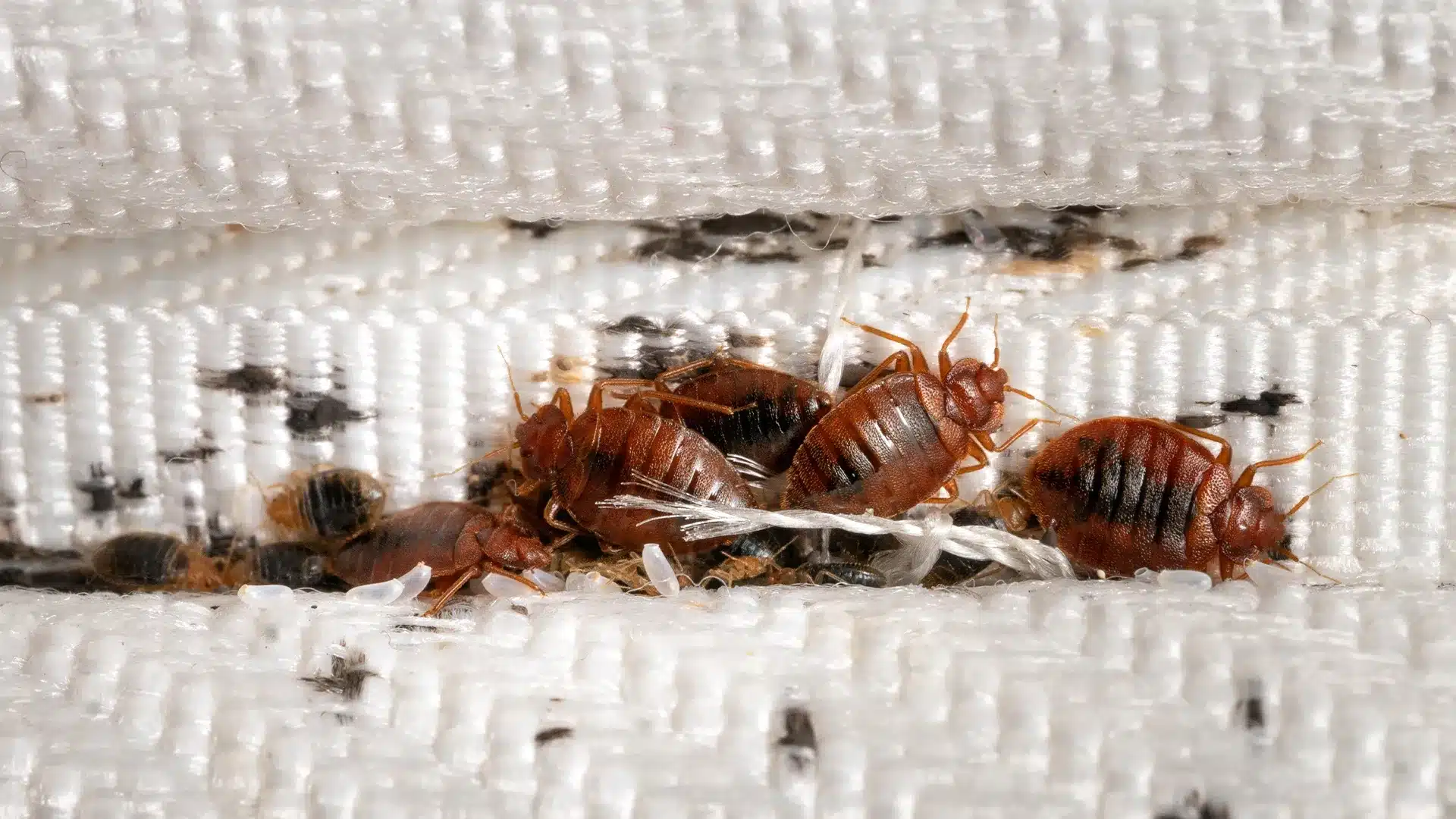Effective Bed Bug Eggs Treatment and Elimination Services in Arlington
Effective Bed Bug Eggs Treatment and Elimination Services in Arlington
Blog Article
Get Educated Concerning the Kinds of Parasite Control Methods and Their Benefits for House Owners
Comprehending the different pest control approaches readily available to house owners is essential for effective pest administration. Home owners who are educated can make strategic choices that not only address insect concerns but likewise boost the general top quality of their living setting.
Chemical Insect Control Techniques
Chemical insect control techniques are an essential component of integrated pest management approaches for house owners seeking efficient services to pest infestations. These approaches include the application of chemical materials created to remove or prevent bugs that intimidate personal effects, health and wellness, and comfort. Usual chemicals utilized include insecticides, herbicides, rodenticides, and fungicides, each tailored to target details parasites.
The key advantage of chemical parasite control is its quick effectiveness; many solutions provide prompt outcomes, minimizing pest populations considerably quickly. Additionally, breakthroughs in chemical formulations have caused items that are much more eco-friendly and have reduced toxicity degrees for non-target microorganisms when used properly.

Biological Bug Control Methods
All-natural parasite control approaches have actually gained prestige as homeowners seek safer and much more lasting alternatives to traditional chemical techniques. Organic parasite control strategies utilize all-natural predators, bloodsuckers, or pathogens to take care of insect populaces effectively. This approach is not only eco pleasant but additionally decreases the threat of damage to non-target varieties, consisting of valuable pests and wild animals.
Among one of the most usual biological control techniques entails presenting all-natural predators right into the setting. Ladybugs can be used to regulate aphid populaces, while nematodes target soil-dwelling insects like grubs. Additionally, parasitoids-- microorganisms that reside on or within a host-- can be utilized to control particular insect varieties by laying eggs inside them, eventually leading to their demise.
Another method is making use of biopesticides, which are originated from all-natural products such as minerals, plants, or microorganisms (bed bug exterminator). These items can efficiently target insects while positioning very little risk to humans and family pets. In general, biological parasite control strategies give house owners with an effective means of parasite administration that lines up with ecological concepts, advertising a healthier living atmosphere while decreasing dependence on synthetic chemicals
Mechanical Insect Control Approaches
Mechanical insect control methods include a range of techniques that physically stop or eliminate bugs without the use of chemicals. These strategies are specifically valuable for property owners seeking environmentally pleasant choices while ensuring the safety and security of their home.
One usual technique is using barriers, such as catches, nets, and screens, which stop parasites from going into homes or particular areas. Setting up window displays can efficiently keep pests out, while using physical barriers around gardens can discourage larger bugs like rabbits or deer. Furthermore, mechanical traps designed for rats can record and remove these insects without the requirement for harmful substances.
One more reliable approach entails using mops and vacuum cleaners to remove bugs directly from surfaces. Regular cleansing and upkeep can substantially minimize parasite populaces by removing food resources and websites hiding places. Using gadgets like ultrasonic insect repellents can hinder various bugs through noise waves that are unpleasant to them yet inaudible to people.
Cultural Parasite Control Practices
Social bug control methods concentrate on customizing the environment and administration methods to develop problems that are less for pest infestations. These techniques are fundamental in preserving a balanced environment and reducing the dependence on chemical interventions. By altering agricultural practices, property owners can properly discourage bugs while advertising plant health and wellness.
One typical technique includes crop rotation, which interrupts the life process of insects by transforming the kinds of plants expanded in a specific area (bed bug exterminator). This not just decreases pest populations yet additionally boosts soil wellness. Furthermore, intercropping-- planting varied plants in distance-- can puzzle parasites and minimize their ability to locate their favored host plants
Water management is another important facet of cultural methods. Appropriate watering methods can prevent standing water, which offers as a breeding place for mosquitoes and various other parasites. In addition, keeping tidiness around the home, such as frequently removing particles and food waste, can significantly reduce bug tourist attraction.
Incorporating these social practices into a comprehensive parasite monitoring technique allows home owners to create a setting that naturally hinders bugs, therefore enhancing the effectiveness of various other control techniques while promoting sustainable horticulture and landscaping.

Integrated Bug Administration Approaches
Integrated Insect Management (IPM) represents a holistic approach that incorporates different techniques to successfully handle pest populaces while minimizing environmental impact. This technique integrates organic, social, physical, and chemical practices to accomplish sustainable bug control. By evaluating pest populations and their all-natural enemies, IPM highlights monitoring and identifying parasites before applying control actions.
Among the core concepts of IPM is using click here to read limits, which establish the level of insect activity that calls for treatment. This ensures that therapies are applied just when necessary, minimizing the reliance on chemical pesticides. Biological control approaches, such as introducing all-natural predators or parasites, job in conjunction with cultural techniques like crop rotation and environment adjustment to disrupt pest life cycles.
Furthermore, IPM urges the use of least-toxic chemical choices when intervention is do it yourself pest control essential, focusing on products that posture minimal threat to non-target organisms and the atmosphere. For homeowners, adopting IPM comes close to not just improves the efficiency of pest monitoring but also promotes a healthier living environment, promoting biodiversity and decreasing chemical exposure. Inevitably, IPM equips home owners to make educated choices that balance insect control with eco-friendly responsibility.
Verdict
In conclusion, comprehending the various pest control techniques encourages house owners to make enlightened choices concerning pest monitoring. Each approach-- chemical, biological, mechanical, cultural, and incorporated bug management-- offers unique advantages that provide to various demands and choices.
Recognizing the numerous bug control methods available to house owners is crucial for effective bug monitoring.Chemical parasite control approaches are an essential component of integrated pest management techniques for house owners looking for reliable options to pest problems. Overall, organic bug control techniques give house owners with a reliable methods of pest monitoring that straightens with ecological principles, promoting a healthier living environment while decreasing dependence on synthetic chemicals.
Cultural parasite control methods focus on changing the atmosphere and monitoring strategies to create conditions that are less helpful to pest invasions.In final thought, understanding the various pest control approaches equips homeowners to make enlightened decisions relating to pest administration.
Report this page